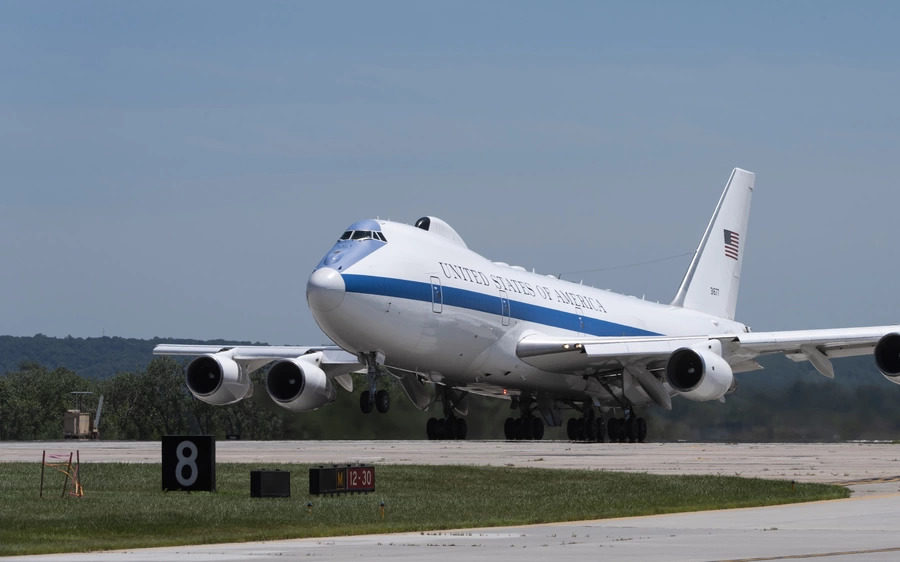With several House Armed Services subcommittees set to allow the Air Force to make cuts to some of its oldest aircraft fleets as part of their 2023 National Defense Authorization Act markups, one airframe in particular—and its delayed successor—is worrying lawmakers.
The E-4B National Airborne Operations Center, sometimes called the “Doomsday” plane because it is meant to withstand a nuclear attack and keep the government running from the air during a crisis, has been flying since the 1970s. The Air Force has been contemplating a replacement since 2019.
However, the search for the replacement, dubbed the Survivable Airborne Operations Center, has been delayed several times, and the Air Force said in early 2022 that the program is still “in the very early stages of development.”
In its 2023 budget request, the Air Force asked for some $203 million in research, development, testing, and evaluation for the SAOC, up from roughly $95 million in 2022 and $50 million in 2021. And in the years ahead, funding is expected to grow, projected in the Future Years Defense Program to swell to nearly $610 million in 2024 and $856 million in 2025.
The HASC subpanel on strategic forces, however, is “concerned” by what it sees as slow progress and by the E-4’s “availability and capability,” it wrote in its mark of the 2023 NDAA.
To do something about it, the subcommittee is proposes requiring report from the Air Force on its plan to sustain the NAOC and field the SAOC.
“This is a continuing concern based off of how long it’s taken to get a replacement program on record. So, at this point, we’re concerned about how long the NAOC is going to be able to hold on and when the SAOC is actually going to be up and in place,” a committee aide told reporters in a background briefing June 7. “So that is just kind of continuing to want to get more information from the Air Force about when that capability is, what its characteristics are for the SAOC, and also what the transition plan is and how we’re going to sustain the NAOC as long as we need it.”
Another aide noted bipartisan interest in getting more information on the issue.
Air Force Safety Command
Another area of bipartisan interest is safety. Congress included a number of safety provisions in the 2022 NDAA, including the creation of a DOD-wide safety council.
Accidents involving military vehicles, especially in training, have accounted for thousands of military deaths in the past several decades, research has found, leading to Congressional hearings on the topic.
Now, the House Armed Services readiness subcommittee is looking to expand its safety efforts in the 2023 NDAA, including a mandate in its markup that would require the Air Force to establish an Air Force Safety Command, led by at least a two-star general.
Air Force Safety Command would be responsible for “the formulation of safety policy, the development of risk management strategies, the monitoring of risk adjudication processes, [and] the provision of safety-related training,” according to the bill’s language. It does not, however, clarify whether the Safety Command would be equivalent to the Air Force’s major commands.
At the moment, the Department of the Air Force has the Air Force Safety Center, which “develops, implements, executes and evaluates Department of the Air Force aviation, occupational, weapons, space and system mishap prevention and nuclear surety programs and policy.” The center is commanded by a two-star—currently, it is Maj. Gen. Jeannie M. Leavitt. Included in the NDAA markup is a provision that elements such as the Safety Center be transferred to the new Safety Command.
The Naval Safety Center has already transitioned to become the Naval Safety Command, providing it with increased authorities.
